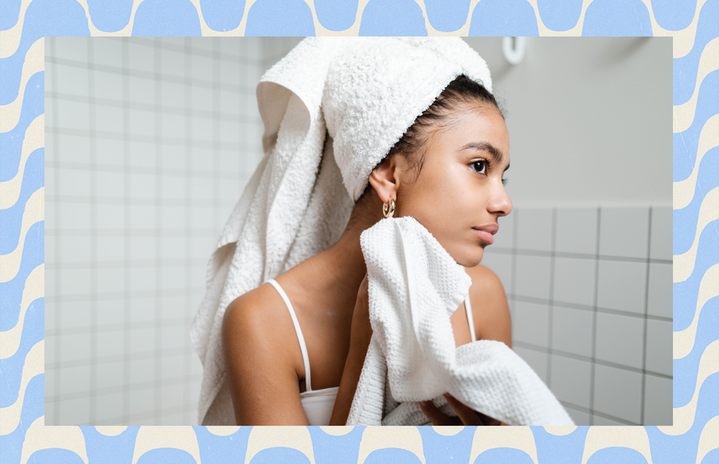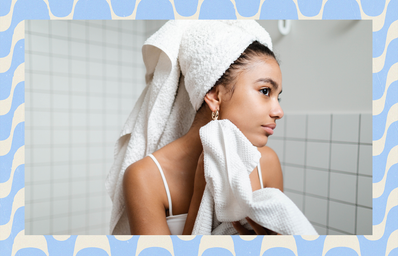Over the last couple of years, it seems people are welcoming an era of minimal makeup, with a higher emphasis on skin care. From the famous get-ready with me’s chock full of product brands, to the occasional flawless ‘candid pics’ showing off clear and “impeccable” skin, taking care of it has become a priority. Nevertheless, very few people have taken the time to learn about the various approaches to building a sustainable routine. Sadly, everyone tends to buy whatever’s currently available at drugstores or even trending on social media platforms.
I used to fall into that trap as well. As a teenager, I never really had much acne. That was until I reached the eleventh grade. Suddenly, I started to get bumps on my forehead, cheeks, chin… All over the place. Like any other teenager, under those circumstances, I freaked out. And what was the first thing I did? Go to the dermatologist? No. I did a quick Google search on how to get rid of blackheads with emphasis on the word FAST. Amongst the recommended products, I would always see pore strips and salicylic acid toners and cleansers that promised to “dry out” those “pesky” pimples. I bought all those products and more, hoping they would help me. They did, but only until the problem would pop up on my face again and again. I came to realize that, usually, western products on the market tend to battle skin problems as they appear, without really paying attention to the root of the problem or how one can prevent it in the first place.
After years of trial and error and drying my skin out, causing it to get even more oily, I met one of my close college friends, who taught me all about Korean skin care. And let me tell you, it is completely different from the Western approach.
While Western skin care focuses on getting rid of any blemishes in a very short period of time, Korean skin care focuses on a softer but more healing approach of curing the skin barrier to fix the root of the problem. If you have a good base, pimples won’t appear as often, and if they do, they won’t bother you for long.
The way to heal a skin barrier is by following Korean skin care’s motto, which is something along the lines of “hydrate, moisturize, and replenish.” No matter the skin type, Koreans urge people to use a good moisturizer to ensure the skin receives all the nutrients it needs. And yes, there are different types of moisturizers for every skin-type. (My faves are water-based moisturizers!)
Given the importance they attribute to moisturization, they’re not big fans of using acid-based treatments, but rather serums. For any skin concerns really. These, yet again, supplement the skin with good “nutrients” and add the slightest bit of acids that eliminate any underlying skin concerns the person might have.
Western skincare, on the other hand, LOVES its acids. Be it salicylic acid, benzoyl peroxide, or retinoic acid. It loves going ham on the skin, right off the bat. Which honestly works for some skin types, just as long as you don’t stop using the products, or you don’t switch them up. And while the approaches they use for normal or dry skin are not that worrisome, how they treat oily skin is completely ruthless, what with harsh chemical exfoliants, cleansers, and toners. There’s no room for balance and restoration and no guidance whatsoever on what products can be mixed and which can’t.
My experience with Korean skincare was very satisfactory. I bought the products and slowly started to implement them into my routine. This part is really important! You never want to introduce a lot of products into your routine immediately, or else your skin will go into a frenzy. You have to do it bit by bit.
Once my skin started to get used to the new routine, I started seeing results after about two weeks. With this new approach, I noticed that my acne subsided significantly. I mean, of course, I still get pimples or blackheads here and there (my acne is mostly hormonal), but for the most part, my skin is pretty clear.
The other difference I noticed that I hadn’t seen with Western skin care, is that my skin doesn’t look dull and it doesn’t have dry patches. It looks glowy without having to worry about excess oil production, and it feels soft and “bouncy.” Lastly, when blackheads or pimples do arise, they tend to be easier to extract and they heal faster after extraction, given that since the skin barrier is healthy, it rebuilds faster.
Change, in any shape or form, is always scary. So there’s no surprise that some people looking for new products to try to take good care of their skin, shy away from routines or products they don’t recognize or know enough about. Before starting my Korean skincare journey, I knew very little about it and had many assumptions that were proven wrong once I did my research. Here are some common misconceptions people have about Korean Skincare, that I used to have as well:
MYTH DEBUNKING
1. Korean Skin Care is more expensive than Western Skin Care
Many people think that Korean Skin Care is far more expensive than Western skin care, and to that, I answer, not necessarily. Although many drugstore skin-care brands tend to be from Western manufacturers, there are some instances in which Western products are extremely expensive. The same happens with Korean products! While some are on the pricier side, some are pretty cheap and you can even get more bang for your buck due to the large product sizes. A good website to search for Korean products in any price range is Soko Glam. (ps. It even gives you a full rundown on what products you can buy to build a routine suited for your specific skin type). I built my 4-step routine with them for just 80 dollars. And even though it sounds like a hefty price, those products have lasted me MONTHS.
2. Korean Skincare entails a 10-step routine
Indeed, what first put Korean Skin Care on the map for Americans was learning about the various steps it entailed and how many people thought it was time-consuming and even “ridiculous.” I know. But in no way do you have to complete the 10 steps to get good results. Nowadays, it’s very common to see a simple 4 to 6-step routine. These steps are as follows: A first cleanse with an oil-based cleanser (to take off any makeup or dirt), a second cleanse with a water-based cleanser (to make sure there is no residue of dirt and/or makeup), applying toner (which restores the skin’s pH), applying moisturizer (which restores the skin’s moisture), an exfoliant applied every week (which ensures the proper removal of dead skin cells), and an optional serum (which further hydrates the skin and promotes skin healing).
3. Korean skincare is not made for oily skin
Korean skincare is made for any type of skin given that it’s not a one-size-fits-all type of thing. There are different types of cleansers, toners, moisturizers, and serums made specifically for any type of skin concern.
4. Moisturizers will make oily skin break out
I cannot stress enough the IMPORTANCE of moisturizing your skin, regardless of how oily it is. The act of double cleansing the skin and then applying toner can dry out the skin, and if moisture is not replenished, the skin barrier will make up for it by producing more sebum. This sebum can then produce, you guessed it, even more pimples. So making sure that the skin is kept hydrated will keep a nice balance in sebum production.
5. Korean skincare will not solve acne problems given that it doesn’t use harsh chemicals.
Something I learned the hard way is that sometimes using harsh chemicals to solve your skin issues is not the answer. It could aggravate the skin even more. In those cases, it’s very important to put a hold on those products and return to the basics of cleanser and moisturizer to give the skin a break. And Korean skincare has the perfect gentle products to do just that.
The transition from a Western skincare routine to embracing the Korean skincare approach has changed the game for me, and I hope this personal experience has shed some light on the myths surrounding Korean skincare. It’s vital to remember though that just because this method helped me, it might not work for everyone. Therefore, I urge you, reader, to slowly try out new products if you’re interested and see for yourself if it’s worth the hype. You never know, it might just do wonders for your skin too!


